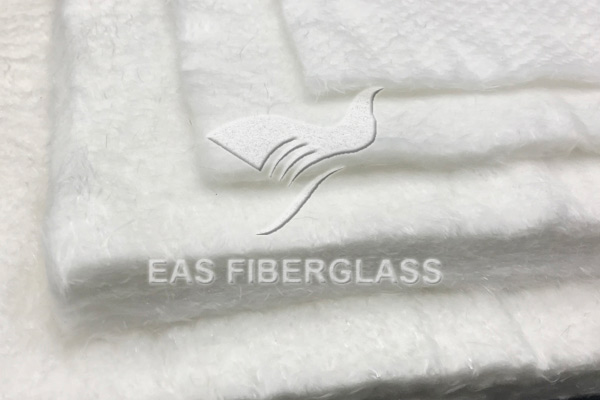Basics of High Silica Fiber Needle Mat

High silica fiber needle mats are cutting-edge materials known for their superior insulation performance in extreme thermal environments. With a high silica content of over 96%, these mats are designed to provide exceptional thermal protection while maintaining durability and versatility. This article delves into the essential properties, manufacturing process, detailed applications, and advantages of high silica fiber needle mats.
What is a High Silica Fiber Needle Mat?
High silica fiber needle mats are non-woven textiles composed of ultra-fine silica fibers. The needle-punching process binds these fibers mechanically without the use of adhesives, ensuring the mat remains free from contaminants and performs consistently even under prolonged exposure to high temperatures.
These mats are prized for their ability to withstand temperatures far beyond the limits of conventional insulation materials, making them an indispensable choice for demanding industrial applications.
Technical Properties
-
Thermal Resistance
- Continuous Operating Temperature: Up to 1000°C (1832°F).
- Peak Temperature: Can tolerate up to 1200°C (2192°F) for short durations.
-
Low Thermal Conductivity
- Ranges between 0.03–0.04 W/m·K (at room temperature), making it highly efficient in minimizing heat loss.
-
Density and Weight
- Available in densities typically ranging from 100–200 kg/m³, offering flexibility in application-specific requirements.
-
Chemical Stability
- Resistant to oxidation, most acids, and alkalis.
- Limited degradation when exposed to certain fluoride-based environments.
-
Dimensional Stability
- Minimal shrinkage at high temperatures, ensuring consistent performance and long-term durability.
-
Non-Combustible
- Meets the ASTM E136 standard for non-combustibility, ensuring safety in fire-critical applications.
Manufacturing Process
Step 1: Fiber Production
Silica-rich materials, such as quartz, are melted at temperatures exceeding 1700°C (3092°F) and drawn into ultra-fine fibers.
Step 2: Fiber Layering
The fibers are layered into a mat-like structure through carding or air-laying methods, ensuring uniform distribution.
Step 3: Needle-Punching
A mechanical process uses fine needles to entangle the fibers, creating a cohesive structure without the use of binders or resins.
Step 4: Heat Treatment
The mats undergo controlled heat treatment to remove impurities, improve fiber bonding, and enhance thermal resistance.
Applications in Detail
-
Aerospace and Defense
- Thermal Barriers: Used in rocket nozzles and re-entry vehicles to protect against extreme heat and thermal shock.
- Aircraft Insulation: Provides fireproof insulation in critical areas such as engines and fuel compartments.
-
Industrial Furnaces and Kilns
- Line furnace walls and doors to minimize heat loss and improve energy efficiency.
- Serve as thermal buffers in high-temperature chambers.
-
Automotive and Transportation
- Heat Shields: Installed in exhaust systems to prevent heat transfer to sensitive components.
- Battery Insulation: Applied in electric vehicles (EVs) to regulate battery temperature and prevent thermal runaway.
-
Energy Sector
- Turbines: Protect components from high-heat environments in gas and steam turbines.
- Power Plants: Used as insulation in boilers and heat exchangers.
Advantages Over Traditional Insulation Materials
-
Thermal Superiority
- Performs reliably at temperatures where fiberglass or mineral wool would degrade.
-
Durability
- Resistant to sagging, deformation, and breakdown under mechanical stress and prolonged use.
-
Eco-Friendly
- Free from harmful binders or chemical additives, ensuring minimal environmental impact.
-
Adaptability
- Can be cut, layered, or molded to suit complex geometries, enabling versatility in design and application.
Technical Considerations for Usage
- Installation: Ensure the mat is installed without compression to maintain its low thermal conductivity.
- Handling: Use protective equipment when handling to avoid skin irritation from fine fibers.
- Storage: Store in a dry, contamination-free environment to prevent moisture absorption.
Conclusion
High silica fiber needle mats represent a benchmark in high-temperature insulation, delivering unmatched performance across diverse industries. Their unique combination of thermal stability, chemical resistance, and durability makes them indispensable for applications demanding excellence in insulation and protection. By understanding the basics and technical details of these mats, industries can unlock their full potential and ensure optimal performance in challenging environments.
EAS Fiberglass Co., Ltd is a professional fiberglass products supplier and provides comprehensive and effective material industrial solutions covering the market of high-performance FRP, highly effective temperature insulation, and highly convenient construction. Nowadays, EAS owns various product lines of fiberglass yarn forming, woven fabrics, fabric coating/lamination, FRP, etc. The complete product lines enable EAS to master the quality control and products market competitive. Taking this advantage involves us in many projects and enhance brand promotion. Certified ISO9001-2008 equips EAS staff and management with a more professional operation. Certification of test reports for products is made by third-party laboratories SGS, TUV, DNV, etc.
